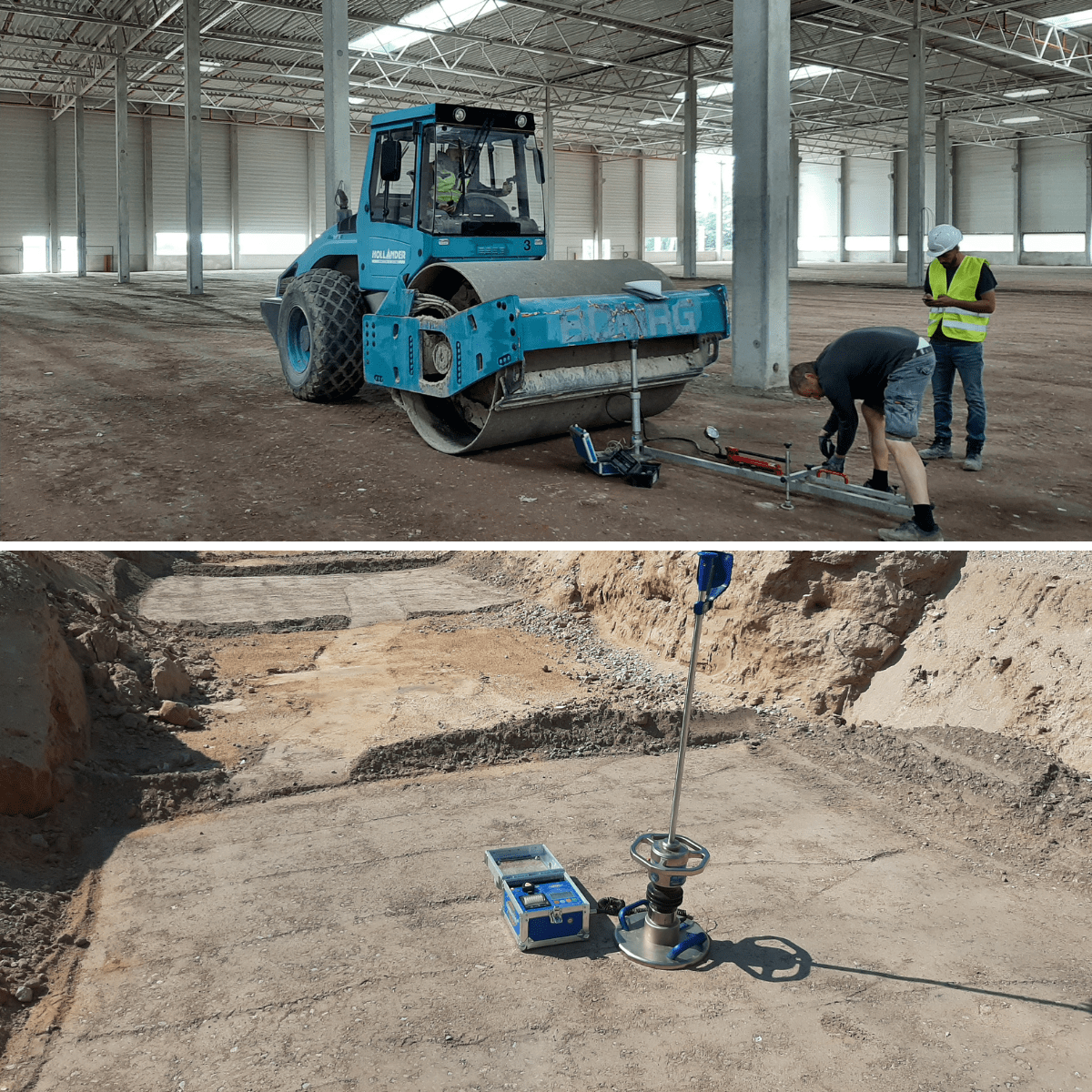For a soil to reach its full bearing capacity, it must be sufficiently compacted. Construction measures in earthworks and road building regularly require control tests to be carried out to check the quality of the construction work.
Compaction tests in the field are primarily carried out by load plate compression tests and are used to check the load-bearing capacity and deformability.
Depending on the magnitude of the applied loads, the substrate must be given a deformation modulus (Ev2-value). The Ev2value is decisive for the assessment of compaction or load-bearing capacity. The Ev2-value is tested in the field by static and dynamic load plate compression tests.
In the static load plate compression test, the soil is repeatedly loaded and unloaded in stages by a circular load plate with a compression device. The depression of the plate into the ground is measured at the respective load level. A loaded vehicle or a vehicle of comparable weight with a weight of at least 4.5 t is required as a counterweight.
In the dynamic load plate compression test, the load plate is impulsively loaded with a light drop weight. The drop weight device consists of a guide rod at the upper end of which a 10 kg drop weight is released and impacts on a spring at the bottom. The impact is transmitted to the ground via a round steel plate with a diameter of 30 cm. The result of the measurement is a so-called Evd-value is calculated, which is entered into the Ev2-value. This conversion is usually calibrated against reference values determined by the static plate load test.
When carrying out load plate compression tests, a minimum scope of investigation must be taken into account. This is specified in the ZTVE-StB and says, for example, that at least 3 compaction tests per 5,000 m² or 1 per 1,000 m² are needed on a subgrade or at least one per 100 m for roads.
When using a dynamic plate load test to determine the degree of compaction, the scope of the tests must be doubled compared to the necessary scope of tests for direct test methods.
The ZTVE-StB contains requirements that are common for roads and paths. The substructure must be compacted in such a way that these requirements are met. Depending on local experience and the importance or stress of the structure, the requirements can also be set higher or lower.
If the required modulus of deformation on the subgrade or sub-base cannot be achieved by compaction, the subgrade or sub-base shall be improved or consolidated or the thickness of the unbound base course shall be increased.
#terratest #fallplate #platepressuretest #buildingground #whatwedo #mullandpartner #engineeringforabettertomorrow #mupgroup

